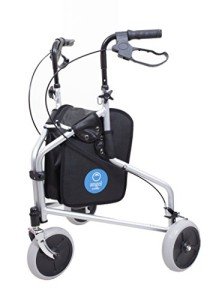Ute님의 문의내용입니다.
-
작성자Ute
-
조회수87회
-
등록일25-06-16 20:19
성함
Ute
연락처
이메일
유입경로
인스타그램 인스타그램
주소
평형
공사시기
공간유형
상업공간
공사예산
4,000~5,000
문의내용
Rollator with Storage: A Comprehensive Guide for Independent Mobility
Rollators are mobility aids designed to assist individuals with walking difficulties while promoting self-reliance and safety. Unlike standard walkers, rollators come geared up with wheels for uncomplicated navigation, making them an important tool for numerous elderly and disabled people. Among the essential features that improve the functionality of rollators is storage. This post explores rollators with integrated storage alternatives, highlighting their benefits, types, and essential factors to consider when picking the right model.
Comprehending Rollators
What is a Rollator?
A rollator is a wheeled walker that supplies assistance for people who might deal with balance or endurance. Usually, rollators are developed with the following functions:

- Wheels: Rollators are geared up with either two or four wheels, permitting smooth maneuverability.
- Hand Brakes: Most have hand brakes for included safety, allowing users to control their speed.
- Seat: Many designs include a built-in seat, supplying a resting point when required.
- Storage: Rollators frequently include baskets or bags for bring personal items like water bottles, groceries, or medical materials.
Benefits of Using a Rollator with Storage
The addition of storage alternatives in rollators brings numerous benefits:
- Convenience: Users can easily carry personal belongings, lowering the need for extra support.
- Self-reliance: Having access to vital products while being mobile empowers individuals to maintain their self-reliance in different environments, such as grocery shops, parks, or homes.
- Safety: By safely storing items, users can more confidently navigate their environments without the danger of dropping important goods.
- Convenience: Having a seat for resting permits users to take breaks when required, further enhancing mobility.
Types of Rollators with Storage
A number of types of rollators come equipped with storage solutions:
| Rollator Type | Description | Appropriate for |
|---|---|---|
| Standard Rollator | Generally features 4 wheels and a sturdy frame. Storage alternatives, like a built-in bag or basket, are often included. | General use, outdoors |
| Compact Rollator | A smaller sized variant that folds quickly for transport. While these designs often have limited storage, lots of still include minimal functionality. | Travelers and tight spaces |
| Sturdy Rollator | Created for larger individuals, these rollators typically have much better storage capacity. | Larger users, stability requires |
| Rollator with Seat | Functions an integrated seat for resting. Storage alternatives vary, often including baskets or shopping bags. | Those requiring regular breaks |
| Walker-Carrier Combo | Acts as both a rollator and a Nrs Freestyle Ultra Lightweight 3-Wheel Rollator - Easy Mobility cart, ideal for shopping trips. | Grocery shopping, outdoor use |
Selecting the Right Rollator with Storage
When picking a rollator with storage, numerous elements should be thought about to guarantee that it meets private needs.
Secret Features to Assess
- Weight Capacity: Always examine the weight limitation of the rollator to make sure safety and use.
- Size and Foldability: Consider how the rollator suits your home and whether it can be quickly stored or carried.
- Storage Capacity: Assess the size and availability of storage compartments. Try to find options that enable for secure storage without overwhelming the user with complexity.
- Adjustable Handles: Ensure that the deals with can be adapted to the appropriate height to improve convenience and ergonomics.
- Braking System: A trusted braking system is important. Guarantee the brakes are simple to engage and disengage.
- Wheel Size and Type: Larger wheels can browse rougher surface, while smaller sized ones might be more suitable for flat surfaces.
Additional Considerations
- Accessories: Many rollators have optional devices, such as cup holders or seat cushions, to improve user experience.
- Warranty and Support: Investigate whether the manufacturer provides a service warranty for defects or damages.
- User Reviews: Online customer reviews can use valuable insights into performance and complete satisfaction.
Maintenance and Care of Rollators
To make sure longevity and optimum efficiency, routine maintenance is important. Users must think about the following practices:
- Regular Cleaning: Wipe down the frame and components to prevent rust and preserve hygiene.
- Examine Brakes: Ensure that the brakes are working properly and adjust them as needed.
- Examine Wheels: Regularly inspect for any debris caught in the wheels or signs of wear and tear.
- Tighten Hardware: Periodically check and tighten up screws or bolts to preserve safety.
Regularly Asked Questions (FAQs)
1. How do I select the best size rollator for me?
Picking the ideal size involves assessing your height and weight, in addition to monitoring handle height changes to make sure that it appropriates for your stature.
2. Can I use a rollator on uneven surface?
Yes, some rollators are designed with larger wheels and shock-absorbing systems that make them preferable for uneven terrain. It's necessary to examine the requirements.
3. Is it easy to fold a rollator for transport?
A lot of modern rollators are developed to be easily foldable. Try to find instructions in the user manual that accompany your chosen design.
4. Just how much weight can a common rollator assistance?
The majority of standard rollators support in between 250 to 350 pounds; nevertheless, heavy-duty designs can support higher weights.

5. Can I include devices to my rollator?
Yes, lots of rollators come with the option of adding devices like cup holders, trays, and bags to improve performance.
In summary, a rollator with storage is an important mobility aid that empowers individuals while providing them with the convenience of transporting essential items. By understanding the different types, crucial functions, and maintenance requirements, users can confidently select the ideal rollator that fits their lifestyle, promoting independence and comfort in day-to-day activities. As mobility aids continue to develop, they end up being increasingly vital for boosting the quality of life for elderly and disabled people.



